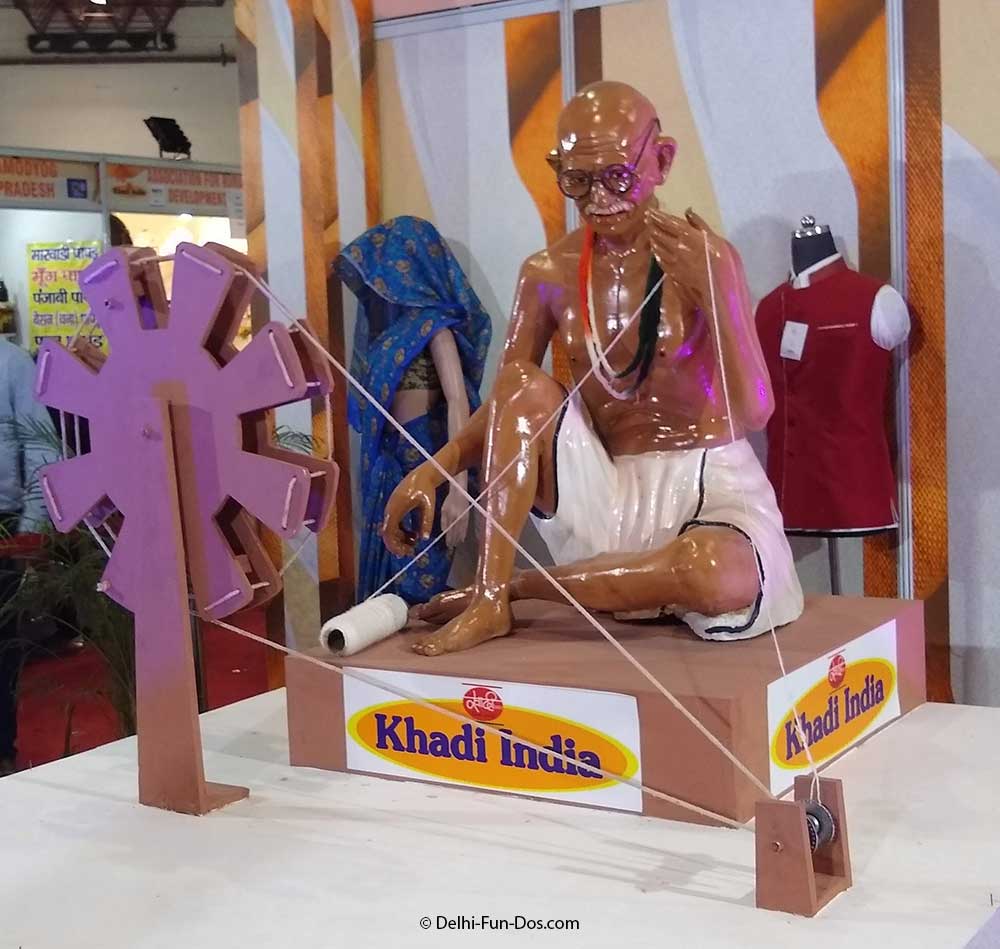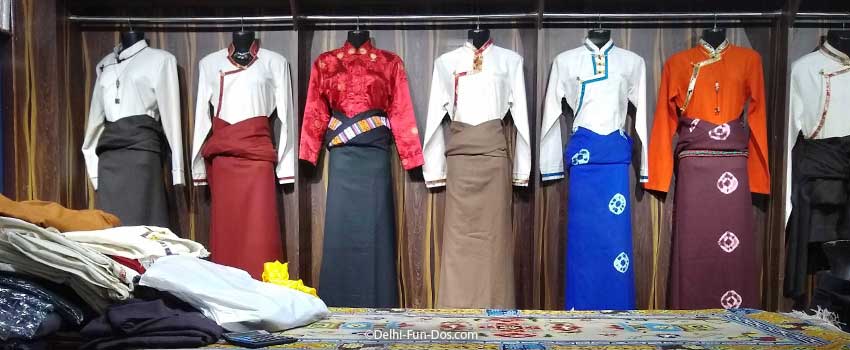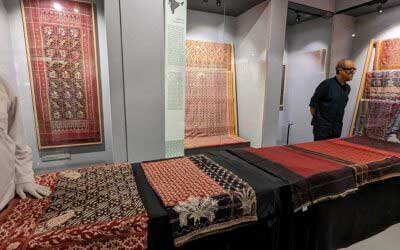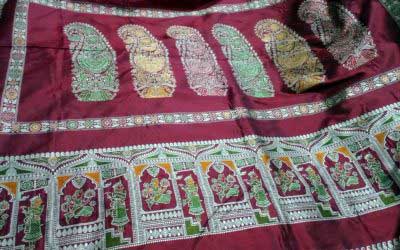It is National Handloom Day 2021 today. The history of handloom in India goes back to the Harappan civilization. Even today, the handloom industry of India is the second-largest employer. Therefore, the importance of National Handloom Day cannot be undermined. Let’s commit to the handloom heritage of India in any way we can.
Contents
Importance of handloom industry in India
Did you know, India is one of the largest producers of handloom in the world? 90% of the world’s handloom items are manufactured in India. The handloom industry employs approximately 10 million artisans in India. The point is – handloom is not a lofty aesthetic pursued by journalists, firebrand women, or politicians while running campaigns. It is an important matter of commerce for us. One of India’s largest exports is handloom items.
What is handloom

A handloom is a cloth weaving machine that is operated manually and not with electricity or any other form of power. When yarns are woven into fabrics on such a machine, it is a handloom product. Traditionally cotton and silk cloth were woven on handloom. These days, fabrics containing a mixture of synthetic threads such as polyester can also be woven on handloom.
Once a fabric is woven on a handloom, it can be dyed, printed, embroidered, or stitched as per the consumer’s requirement.
Advantages of handloom
We started patronizing handloom, not on any ethical ground but because it was convenient. We landed up visiting a Khadi exhibition at Dilli Haat and bought some cotton shirts. It was peak summer and the shirts were very light and comfortable on the skin. So, without any intention of making any intellectual statement, we started wearing hand-woven shirts, kurtas pajamas, dhotis, and shorts as well!
Types of handloom products
Without sounding pedantic, that is the point we want to make. The general notion is handloom is all about stiff cotton sarees worn by Sonia Gandhi, Priyanka Gandhi, or among the latest converts, our current textile minister Smriti Irani. Not to say that the handwoven garb adds a lot of oomph to the public image of these politicians, handloom is not restricted to sarees.

It has evolved over time with a much wider ambit. Cool contemporary styles in all sorts of clothes for women as well as men are widely available in markets today. Khadi, the government organisation, has made efforts to upgrade their act and shed the Gandhian image. Cool cuts and colours are now available under the Khadi brand. If one visits the revamped Khadi outlet at Connaught Place, the number of young enthusiastic customers at any time in the day corroborates our observation.
Handloom is in fact much more than clothes. Handloom linen and towels have been used in Indian households for ages. While urban folks have mostly moved to branded mill woven towels, gamchhas are still the most convenient way to dry themselves in villages. The beautifully designed red-white Gamosa from Assam is a work of art. Handloom backpacks, sling, and tote bags are accessories that can easily add a subdued brightness to one’s ensemble. A hand-woven napkin or a cushion sleeve or wall art can add panache to the home.
Difference between handloom and Khadi
Handloom fabric is woven with yarn on a manually operated loom. The yarn may have been produced in a mill. But if the mill-spun yarn is woven into cloth on a handloom, it is a handloom product.

Khadi is a special variety of handloom where the fabric is woven with hand-spun yarn. A yarn is traditionally handspun on the Charkha machine. Mahatma Gandhi’s Swadeshi Movement aiming towards self-reliance made the Charkha the defacto symbol of India’s freedom movement. Given that India’s Independence Day 2021 is around the corner on 15th August, Khadi assumes more significance this season.
Khadi fabrics are known for their unique texture as well as breathability and fashion statement. To sum it, Khadi, is also a handloom item, but of a specific nature.
Handloom brands in India
Khadi is perhaps the most popular handloom brand in India. They have various outlets all over the country.

If you visit any state handloom shops like Gurjari, Rajasthali, Mriganayani, or Biswa Bangla at Rajiv Gandhi Handicrafts Bhavan you would find quality handloom items easily.
There are various non-governmental organizations (NGOs) that have been helping us warm up to the rich legacy of Indian handlooms and handicrafts as well. To this end, Dastkari Haat has been relentless and they bring an assortment of colorful and traditional handicrafts and textiles to people in Delhi NCR during their Annual Dastkari Haat Crafts Bazaar and various other exhibitions throughout the year. A rich collection of handloom is also available at the Hunar Haat and Aadi Mahotsav exhibitions.
The Trade Fair or IITF does its bit in bringing together handloom weavers from all across India. The hand-woven shawls and jackets from Himachal Pradesh are such a talking point in any event. The IITF also has stalls selling handloom items from neighboring countries like Bangladesh, Bhutan, and Sri Lanka.

Along with government organisations, many businesses are also focused on providing quality handloom items for men, women, and children. Fabindia stores have sprouted in almost all corners of the country. We were part of the Fabindia jury for their 2020 men’s clothesline. The sweat and toil that go in making their products is an eye-opener.

A host of fashion designers are working with Khadi fabric as well. We attended Delhi Times Fashion Week where celebrated designer Ritu Beri showcased many quirky items designed using Khadi. Many celebrities from the political circuit walked the ramp during the show.
Let’s commit to the handloom heritage of India
Let us share our recent experience when we were invited to dinner by the Ambassador of Thailand His Excellency Mr. Chutintorn Gongsakdi at his residence. The Ambassador and his wife were clad in Ikkat weaves. The Ikkat shirt and dress looked so contemporary that we could not but mention that to him. The Ambassador said he had picked up the fabric from Surajkund Mela and rued that he should have picked some more.

DelhiFunDos with H.E. Mr. Chutintorn Gongsakdi – The Ambassador of Thailand in India at Royal Thai Embassy, New Delhi
Somehow it seems that it is the foreigners who seem to appreciate our stuff more than us at home. Our recent experience while shopping at upend lifestyle stores in the United States of America also support this view. But that is just fine – Vasudeva Kutumbakam we say.
It would definitely help our gasping handloom sector in India to have more local patronage as well. Not to say that machine-woven items are inferior. But using one or two items can go a long way in preventing the suicides of handloom weavers in Andhra or Bengal.
It is National Handloom Day today. The diverse varieties of handloom in India make sure there is something for everybody. Let’s commit to our handloom tradition in any little way we can.




This is so beautiful and you’re so right, important too. Thanks so much for sharing this post. I’ll go ahead and pin it.
Thanks
these are all so beautiful. I love learning things like this about cultures outside of my own~
I didn’t really know that India is one of the largest producers of handloom in the world, but it doesn’t really surprise me. It’s another reason to love this country! 🙂
indeed it is
While I knew India is famous for its handlooms, I didn’t know that its no 1 in it. India craftsmanship is known worldover and handloom is such a beautiful proof of it.
What gorgeous outfits. I can see why it’s so important. I would love to see these in person.
In all honesty, i’ve never heard of the story behind handloom before. This is amazing and i also love the style. Great post.
Handloom day seems like an awesome day to celebrate our ancestors. I love the way the robes look. so fashionable.
I love clothing from India. There are several around this area from India and I always admire their clothing. I didn’t know about Handloom Day, that’s pretty neat to know.
The fashion is so amazing and stunning. I see why this holiday is so important as well!
Handloom materials are always comfortable on skin.It is nice to know that there is a day for Handloom.It is a good way to celebrate this traditional creativity.
Those were some amazing and unique designs! That’s is a really nice collection of handloom, love the white and blue combination.
I love handloom sarees. It’s true there are many handloom outfits are available in India. Great post. Learned many new things about Handloom.